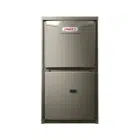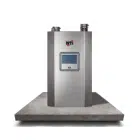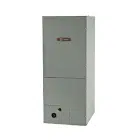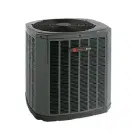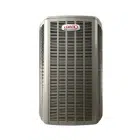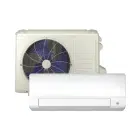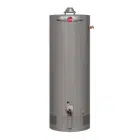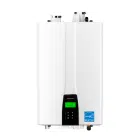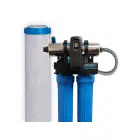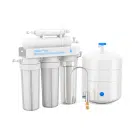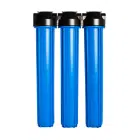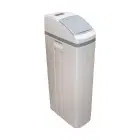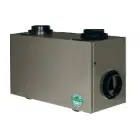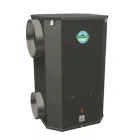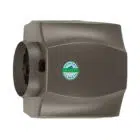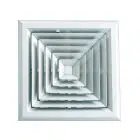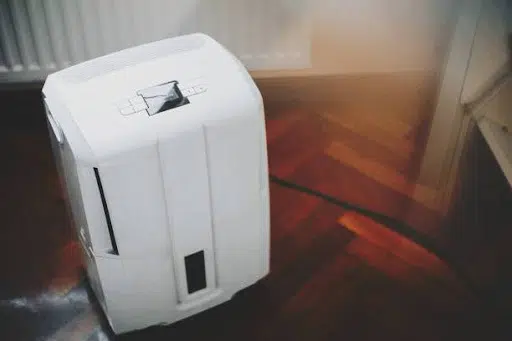
Table of Contents
If you’ve ever walked into a room that feels damp, stuffy, or just downright uncomfortable, you’ve probably experienced the unpleasant effects of high humidity. Managing moisture levels in your home isn’t just about making it feel more comfortable—it’s crucial for maintaining your health and the condition of your living space. In a country like Canada, where seasonal changes bring everything from sweltering summers to cold, damp winters, controlling indoor humidity becomes even more important. That’s where dehumidifiers come in, providing a simple, effective solution for keeping your home’s moisture levels in check.
Why Humidity Control Is Key to a Comfortable Home
Too much humidity can be a silent disruptor in your home. Beyond the clammy feeling in the air, high humidity contributes to the growth of mold, mildew, and dust mites. These allergens thrive in moist environments, potentially leading to respiratory issues or exacerbating existing conditions like asthma and allergies. If you want to make sure your home is comfortable and healthy, it’s essential to manage humidity properly. Home dehumidifiers in Canada are designed to help with this, ensuring that moisture levels stay within the optimal range—around 30% to 50%—so you can breathe easier and prevent any long-term damage to your property.
Dehumidifiers 101: What They Are and How They Work
So, what exactly is a dehumidifier? In simple terms, it’s a device that pulls excess moisture out of the air. Whether you need to use a dehumidifier in a small bathroom or a large, damp basement, the appliance operates by sucking in humid air, cooling it down to condense the moisture, and then releasing drier air back into the room. The condensed water is collected in a tank or drained automatically, depending on the model.
Home dehumidifiers come in various shapes and sizes, tailored to specific needs. Portable units are great for addressing moisture problems in single rooms, while whole-home dehumidifiers work within your HVAC system to regulate humidity throughout the house. If you’re already running a single-stage air conditioner to keep the temperature cool, adding a dehumidifier can significantly boost your indoor comfort without overworking your AC.
When Is It Time to Use a Dehumidifier?
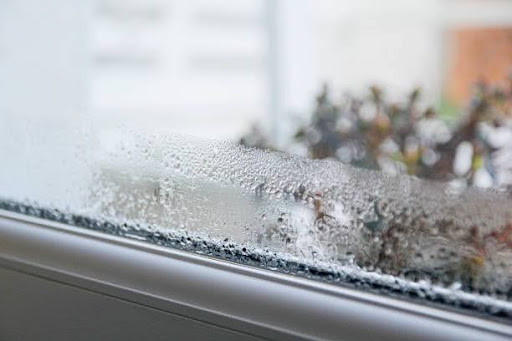
How do you know when it’s time to use a dehumidifier in your home? There are several signs that your space might be harboring too much moisture. First, keep an eye out for mold. If you notice mold growth on walls, ceilings, or even your shower tiles, it’s time to take action. Mold and mildew thrive in moist conditions, and they can spread quickly if humidity isn’t brought under control.
Another sign is condensation on windows. When moisture in the air meets cold glass, it forms droplets. This might seem like a minor annoyance, but over time, it can cause serious issues like rotting window frames and the spread of mold in areas you can’t see.
Musty smells are another red flag. If certain areas of your home, like the basement or laundry room, smell damp and stale, that’s a clear indicator that you need to use a dehumidifier. Lastly, check for damp walls or ceilings—these might not always be caused by leaks; high humidity can penetrate walls and lead to long-term structural damage.
In a country like Canada, where seasonal shifts can lead to fluctuations in indoor moisture levels, it’s important to stay on top of humidity control year-round. High humidity in the summer can make your home feel stifling, while in winter, poorly ventilated spaces can lead to condensation buildup and mold growth. A dehumidifier is your best tool for managing these seasonal changes.
Find out the best humidity levels for winter in Canada in our previous guide.
The Health and Comfort Benefits of Using a Dehumidifier
By investing in home dehumidifiers, you’re not just improving your home’s comfort; you’re making it a healthier place to live. Dust mites, mold spores, and other allergens thrive in moist environments. When you use a dehumidifier, you lower the humidity levels, cutting down on allergens and making it easier to breathe, especially if you or your family suffer from allergies or asthma.
Beyond health, there’s the comfort factor. Humid air feels warmer because moisture makes it harder for your body to cool itself. This means you might find yourself cranking up your single-stage air conditioner, only to find that it’s not enough. A dehumidifier helps dry out the air, making it feel cooler and more comfortable without over-relying on your AC.
A dehumidifier also helps preserve your home. High humidity can warp wooden floors, cause wallpaper to peel, and even damage electronics over time. Keeping the air dry means less wear and tear on your home, protecting it from moisture-related issues that could become expensive problems down the line.
Picking the Perfect Dehumidifier for Your Space
So, what kind of dehumidifier do you need? The answer depends on your home’s size and humidity levels. If you have a small space, like a bathroom or bedroom, a portable dehumidifier should suffice. These units can typically handle anywhere from 20 to 30 pints of moisture a day, which is enough to cover most small, enclosed areas.
For larger spaces, like basements or open-concept living rooms, you’ll want something more powerful. Larger home dehumidifiers can remove 50 pints or more of moisture per day and are designed for continuous use in high-humidity areas.
If you’re dealing with widespread humidity issues throughout your home, consider investing in a whole-house dehumidifier. These units are installed as part of your HVAC system and can regulate the humidity in every room, ensuring that your entire home stays comfortable and dry. Plus, if your HVAC system includes a single-stage air conditioner, a whole-home dehumidifier will reduce strain on your AC by allowing it to focus on cooling rather than fighting against moisture.
When selecting a dehumidifier, look for features that make it easier to use, like automatic shutoff when the tank is full, continuous drainage options, and energy-efficient models that won’t rack up your electricity bill. Home dehumidifiers with Energy Star ratings are particularly efficient, saving you money while keeping your air dry and comfortable.
Conclusion
Dehumidifiers are an essential tool for maintaining a comfortable and healthy home. Whether you’re trying to prevent mold growth, reduce allergens, or simply make your home more livable, using a dehumidifier can make a big difference. From portable units for small spaces to whole-home systems integrated with your HVAC, there’s a dehumidifier out there that fits your needs.
If you’re ready to take control of your home’s humidity levels, now’s the time to invest in one of the top dehumidifiers available from HVAC Service Solutions. We offer a range of the best units designed to handle any size home, ensuring you stay comfortable and your air quality remains top-notch. Don’t let excess moisture compromise your living space—contact us today to find the perfect solution for your home.
Frequent Asked Questions
What is a dehumidifier, and how does it work?
A dehumidifier is an appliance that reduces humidity in the air by extracting excess moisture. It works by drawing in humid air through a fan, cooling it down over refrigerant coils to condense the moisture, and then collecting the water in a reservoir or draining it through a hose. Afterward, the dehumidifier releases the drier air back into the room. This process helps maintain a balanced indoor humidity level, which improves air quality and prevents mold, mildew, and dust mites from thriving. Some dehumidifiers use desiccant materials to absorb moisture, but refrigerant-based models are the most common for home use.
When should I use a dehumidifier in my home?
You should use a dehumidifier when you notice signs of excess moisture in your home, such as mold or mildew growth, condensation on windows, damp spots on walls or ceilings, or a musty smell. These symptoms are clear indicators that your home’s humidity levels are too high, which can lead to structural damage, worsen allergies, and make your home feel uncomfortable. Areas like basements, bathrooms, and kitchens tend to accumulate more moisture, especially in regions with humid climates or during rainy seasons. Using a dehumidifier helps control these issues and makes your living environment healthier.
What are the benefits of using a dehumidifier?
Using a dehumidifier has multiple benefits. It improves indoor air quality by reducing allergens such as mold, mildew, and dust mites, which can trigger asthma and allergies. By lowering the humidity, it also makes your home more comfortable, especially in the summer, since dry air feels cooler. A dehumidifier also protects your home’s structure by preventing moisture-related damage like wood warping, peeling paint, and corrosion. Additionally, it reduces the load on your air conditioner (particularly if you have a single-stage air conditioner), helping it run more efficiently.
How do I choose the right size dehumidifier for my home?
Choosing the right size dehumidifier depends on the room’s size and the moisture level you’re dealing with. For small spaces like bathrooms or closets, a compact dehumidifier capable of extracting 20-30 pints of moisture per day is usually sufficient. For larger areas like basements, a more powerful unit that removes 50 pints or more daily is better. If you need to dehumidify the entire house, consider a whole-home dehumidifier that integrates with your HVAC system. These larger units are especially useful in homes with single-stage air conditioners because they help maintain consistent humidity levels across all rooms.
Where should I place my dehumidifier for the best results?
For the best results, place your dehumidifier in the area of your home that experiences the most moisture. Common locations include basements, bathrooms, laundry rooms, and kitchens, as these spaces often have higher humidity levels. Make sure the unit is placed on a flat surface with at least 6-12 inches of clearance around it to allow proper air circulation. Avoid placing the dehumidifier too close to walls or furniture, as that can restrict airflow. For larger spaces, you may need to move the dehumidifier periodically or invest in multiple units to ensure even moisture removal.
What humidity level should I maintain in my home?
The ideal indoor humidity level should be between 30% and 50%. This range is optimal for comfort and preventing the growth of mold, mildew, and dust mites, which thrive in higher humidity environments. If your home’s humidity level regularly exceeds 50%, it’s a good idea to use a dehumidifier to bring it down to a more comfortable and healthy level. During the winter, aim for the lower end of that range (around 30%) to avoid condensation on windows and other surfaces. Many dehumidifiers have built-in hygrometers to help you monitor and adjust the humidity automatically.
Can a dehumidifier help with allergies?
Yes, a dehumidifier can significantly help with allergies. Allergens like dust mites, mold spores, and mildew thrive in humid environments. By using a dehumidifier, you reduce the overall humidity, which limits the growth of these allergens. This can alleviate symptoms like sneezing, coughing, and itchy eyes for people with allergies or asthma. Keeping the humidity in check also improves overall air quality, making the home more comfortable for everyone. For individuals who suffer from chronic respiratory issues, home dehumidifiers are an effective tool in maintaining a healthier living space.
How often should I empty my dehumidifier’s water tank?
The frequency of emptying your dehumidifier’s water tank depends on the humidity level in your home, the size of the tank, and how often the unit is running. In high-humidity environments, you may need to empty it once or twice a day if you have a smaller tank. Many larger home dehumidifiers have a continuous drainage option that allows water to flow directly into a nearby drain or sump pump, eliminating the need to empty the tank manually. If your unit has this feature, make sure the hose is properly connected to avoid leaks.
Can I use a dehumidifier with my air conditioner?
Yes, you can (and often should) use a dehumidifier alongside your air conditioner. While air conditioners cool the air, they don’t always remove enough moisture to maintain a comfortable humidity level. This is especially true with single-stage air conditioners, which either run at full power or are completely off, leading to less efficient dehumidification. A dehumidifier works alongside your AC to remove excess moisture, making your home feel cooler without overworking the air conditioner. This combination can also help reduce energy costs by making your air conditioner run more efficiently.
What maintenance does a dehumidifier require?
To keep your dehumidifier running efficiently, regular maintenance is essential. Clean or replace the air filter every 1-2 months, depending on how often the unit is used. This helps maintain airflow and prevents dust buildup inside the unit. Also, check the water tank regularly and empty it as needed or ensure the drainage hose is functioning correctly if you’re using continuous drainage. It’s a good idea to wipe down the coils periodically to remove any dust or debris that might accumulate. By keeping up with basic maintenance, you can ensure your home dehumidifier operates smoothly and effectively for years.
Share

